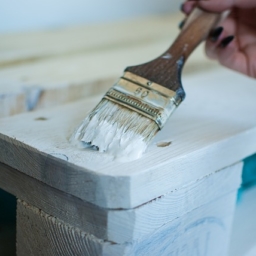When most people shop for a sofa, they usually look for a specific colour or style. The fabric is typically last on their list of things to consider. There are so many types to choose from and they each have advantages and disadvantages. There are synthetics, natural fibres, and leather to choose when picking a sofa fabric. Within each of those categories, there are several variations. When selecting a sofa that suits your lifestyle, decor, and budget, do not forget to think about fabric as well. Here is a breakdown of each type to help you make your decision.
Synthetic
Made from petroleum products that are moulded into fine strands and are woven into a fabric, the most common kinds are polyester, polypropylene, acrylic, nylon, and olefin. Synthetic materials are sometimes blended with natural fibres to make them more durable and stain-resistant. Some are also made to look like natural fibres. Acrylic, for example, is similar to wool in appearance and texture. Microfibres made from polyester are often densely woven or nonwoven with a short nap to resemble and feel like suede. Microfiber upholstery is preferred people with pets in their home because of how resistant it is to claw marks and staining.
Natural
Linen, silk, wool, and plant-based cotton are all considered natural fibres. The most recent addition to this list is Rayon, which is made from processed wood pulp and looks similar to silk. You likely own several garments made from these materials. They will exhibit similar properties as your clothing but will be more tightly woven. Linen, cotton, and wool are the most durable natural materials for a sofa. Although they are all sensitive to moisture and sunlight damage. If you choose wool, be sure to moth-proof it before use.
If you want to go with natural fibres because you are trying to avoid synthetic materials, keep in mind that some natural substances are treated with synthetic chemicals and dyes. To avoid anything synthetic, look for the “certified organic” label.
Leather
Technically, this is not fabric but, instead, a prized covering. The best leather is top-grain, which uses the entire depth of the hide and exposes the skin surface. Suede and split-grain leather are thin because the hide is divided into two to show a cut surface instead of the skin. Leather can be dyed in a variety of colours but is commonly used on sofas with its natural tan and brown colouring. There are also bonded, composite or bi-cast, and artificial leather products available. Quite a few are difficult to distinguish from the real thing, but they may not hold up as well against damage, making them difficult to repair. Some manufacturers combine different types of leather to reduce costs.
Choosing A Sofa Fabric
If you want the most bang for your buck, you should choose between synthetic, cotton, and blended fabrics. Households with pets and small children should look for fibres that have sturdy weaves like microfibre or twill. If you are looking for an investment piece, consider leather and traditional fibres like wool, silk, or linen.
Keep style in mind too by opting for a flat weave like twill or lightly textured patterns for a contemporary look. Traditional or period-style sofas look better when made luxury fabrics like velvet.
If you are considering a new sofa or need yours repaired or refurbished, call JENSO. Our team of experienced design consultants can help keep your furniture looking stylish and modern.














